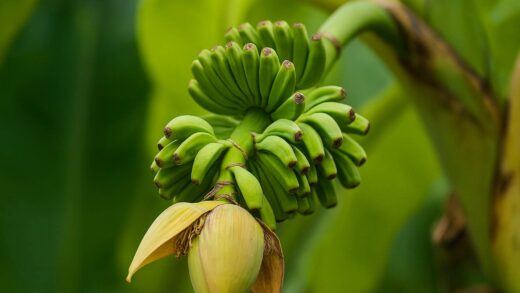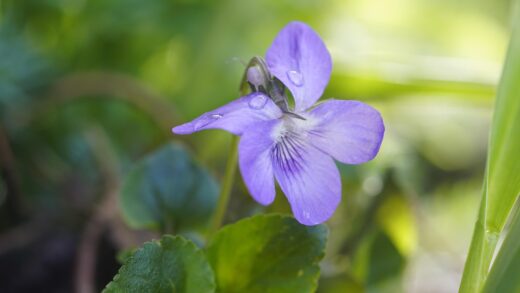Identifying and preventing root rot
By far the most common and devastating ailment to affect English lavender is not a pest or a traditional disease, but a condition known as root rot. This issue is almost always a direct result of improper growing conditions, specifically soil that is too heavy and retains too much water. The roots of lavender are finely adapted to dry, airy conditions and simply cannot tolerate being in soil that is consistently damp or waterlogged. When deprived of oxygen in saturated soil, the roots begin to die and become susceptible to opportunistic water-mold fungi, such as Phytophthora, which then cause the roots to decay rapidly. The prevention of root rot is therefore the single most important aspect of maintaining a healthy lavender plant.
The symptoms of root rot can often be misleading, as they can mimic the signs of a plant that is underwatered. The first indication is typically a yellowing of the lower leaves, followed by a general wilting of the entire plant, even when the soil is moist. As the condition progresses, the stems at the base of the plant may become soft and mushy, and the entire plant will begin to turn brown and die back. If you were to gently excavate the plant, you would find that the roots are brown, soft, and decaying, rather than the firm, white roots of a healthy plant.
Prevention is the only effective cure for root rot, as once it has taken hold, it is nearly impossible to reverse. This prevention begins at the moment of planting with rigorous site and soil preparation. You must choose a location that receives full sun and has naturally good drainage. If your soil is composed of heavy clay, it is imperative that you amend it heavily with materials like coarse sand, grit, or pea gravel to improve its porosity. Planting lavender on a raised mound or in a dedicated raised bed is an excellent strategy to guarantee that water drains away from the sensitive root crown.
Proper watering practices are the other key component of root rot prevention. Once established, lavender is extremely drought-tolerant and should be watered infrequently but deeply, allowing the soil to dry out completely between waterings. Overwatering is the primary trigger for this condition, so it is always better to err on the side of too dry rather than too wet. Using an inorganic mulch like gravel around the base of the plant can also help to keep the crown dry and prevent moisture from accumulating right against the stems, further reducing the risk of rot.
Common fungal and bacterial issues
While root rot is the most significant threat, English lavender can occasionally be affected by other fungal or bacterial diseases, particularly in environments with high humidity, poor air circulation, or during unusually wet weather. One such disease is botrytis, also known as gray mold. This fungus typically affects the dense inner parts of the plant where moisture can become trapped, causing stems to wilt, turn brown, and become covered in a fuzzy gray mold. It thrives in cool, damp conditions and can spread quickly if not addressed.
More articles on this topic
Another potential issue is leaf spot, which can be caused by various fungi, most notably Septoria. This disease manifests as small, dark spots on the leaves, which may enlarge over time and develop a yellow halo. While generally not fatal to the plant, a severe infection can reduce the plant’s vigor and cause significant leaf drop, diminishing its aesthetic appeal. Like botrytis, leaf spot fungi flourish in moist conditions, making proper plant spacing and watering techniques crucial for prevention.
Shab disease, caused by the fungus Phomopsis lavandulae, is a more serious issue that can cause significant dieback in lavender. The first sign is often the wilting and browning of a single shoot. Upon closer inspection, you may find dark, sunken lesions at the base of the affected stem. This disease can spread through the plant’s vascular system, eventually killing large sections or even the entire plant. It often enters the plant through wounds, such as those caused by improper pruning or winter damage.
The best defense against all these fungal and bacterial diseases is a proactive, preventative approach centered on good cultural practices. Ensure your lavender plants have plenty of space between them to promote good air circulation, which helps foliage to dry quickly. Always water at the base of the plant to keep the leaves as dry as possible. Prune regularly to maintain an open, airy structure and promptly remove any dead or diseased foliage to prevent pathogens from overwintering. Using sharp, clean tools for pruning is also essential to avoid creating ragged wounds that can invite infection.
Dealing with common insect pests
English lavender is renowned for its ability to repel many common garden pests, thanks to the potent aromatic oils contained within its leaves and flowers. Most chewing insects, as well as larger animals like deer and rabbits, find the scent and taste of lavender unappealing and will generally leave it alone. This natural resistance makes it a fantastic companion plant in the garden and a relatively low-maintenance choice in terms of pest control. However, a few specific insects can occasionally become a nuisance, especially on plants that are stressed or not in optimal health.
More articles on this topic
One of the most common pests you might encounter is the spittlebug, which appears in the spring. The presence of this insect is easily identified by the frothy, spit-like masses it creates on the stems of the plant. Inside this foam, the nymph of the insect is feeding on the plant’s sap. While they may look alarming, spittlebugs cause very little actual damage to a healthy lavender plant, and their presence is primarily an aesthetic issue. They can be easily and effectively removed with a strong spray of water from a garden hose, which will wash away both the foam and the insect inside.
Aphids are another sap-sucking insect that may occasionally be found on the tender, new growth of lavender plants, particularly in the spring. These small, pear-shaped insects can multiply quickly, but they rarely reach infestation levels that cause significant harm to the plant. As with spittlebugs, a blast of water can often be enough to dislodge them. You can also encourage natural predators, such as ladybugs, lacewings, and hoverflies, into your garden, as they are voracious predators of aphids and provide excellent biological control without the need for chemicals.
In some regions, the garden tiger moth caterpillar may feed on lavender foliage. These large, fuzzy caterpillars, often called “woolly bears,” can cause noticeable chewing damage to the leaves. In most cases, the damage is minor, and the plant will recover easily. If you find them on your plants, they can be picked off by hand and relocated. Generally, chemical insecticides are not necessary or recommended for lavender, as they can harm the beneficial pollinators that are attracted to the flowers and disrupt the natural balance of your garden ecosystem.
Integrated pest and disease management
An integrated pest management (IPM) approach is the most sustainable and effective way to keep your English lavender healthy and resilient. IPM is a holistic strategy that prioritizes the prevention of problems and uses the least toxic control methods as a last resort. The foundation of IPM for lavender is creating an environment where the plant is inherently healthy and stress-free, as vigorous plants are far less susceptible to pests and diseases. This begins with selecting the right location with full sun and ensuring the soil has the excellent drainage that lavender demands.
Regular monitoring of your plants is a key pillar of IPM. Take the time to walk through your garden and inspect your lavender bushes closely. Look for any early signs of trouble, such as yellowing leaves, wilting stems, spots on the foliage, or the presence of pests. Catching a problem in its early stages makes it much easier to manage. For example, pruning out a single stem affected by botrytis can prevent the disease from spreading to the rest of the plant. Early detection and prompt action can often negate the need for more intensive interventions later on.
Cultural controls are your first line of defense. This includes practices like providing adequate spacing between plants for good air circulation, watering correctly at the base of the plant, and pruning to maintain an open structure. It also involves good garden hygiene, such as cleaning up fallen leaves and debris around the plants to reduce overwintering sites for pathogens and pests. Using the right tools, such as sharp, sterilized pruners, also falls under cultural control, as it prevents the spread of disease from one plant to another.
When control is necessary, IPM dictates that you should start with the least harmful methods first. This could mean physical removal, such as hosing off aphids or hand-picking caterpillars. If a spray is needed, opt for biological or organic options, such as insecticidal soap or neem oil, before considering synthetic chemical pesticides. By adopting an integrated approach, you work with nature to create a balanced garden ecosystem where your lavender can thrive with minimal intervention, remaining a healthy and productive plant for many years.


















